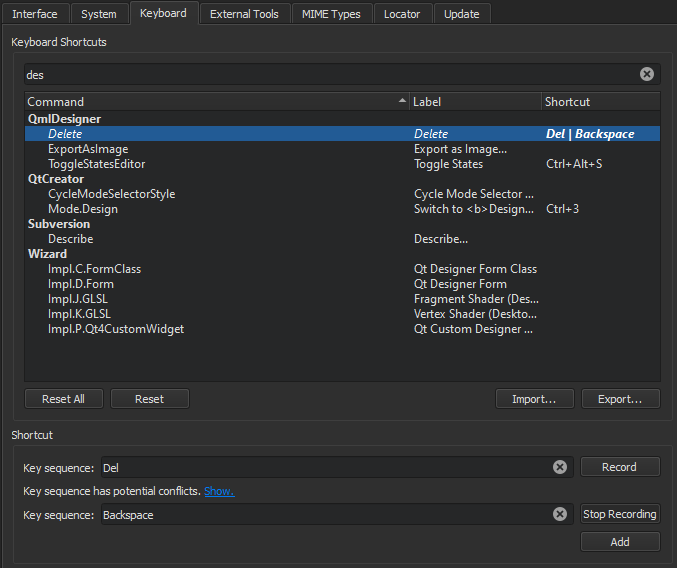
- #SHORTCUT TO CHANGE CASE IN WORD MAC MAC OS X#
- #SHORTCUT TO CHANGE CASE IN WORD MAC FREE#
- #SHORTCUT TO CHANGE CASE IN WORD MAC MAC#
By contrast, Keyboard Maestro has no problem activating commands that contain the shift key in other programs. However, if you ask KeyBoard Maestro to activate it, it can't (others have noticed this behavior as well). E.g., CTRL SHIFT = works fine in PowerPoint if you activate it directly from the Keyboard. There's something funny going on with the shift key in Office.

I reassigned it to a new shortcut that doesn't use the shift key, and now it works fine.
#SHORTCUT TO CHANGE CASE IN WORD MAC MAC#
If the problem happens on all the keyboard shortcut, you can try safe mode to exclude local environment impact via launching a safe mode/boot on Mac OS, to check if issue caused by cache or directory issue with startup disk. Could you please try to add other keyboard shortcut(like CMD+) to see if the problem only happen on "CMD+Shift+=" keyboard? Since you have tried assign a shortcut for Superscript, however, it still didn't work. But neither of these have been switched to activate superscript or subscript. So I did try CTRL SHIFT = and CTRL = in Word, just to check. [Note, however, that even though the change in PowerPoint happened two years ago, MS continues to post the wrong documentation, telling users to use the CMD key!: Īnd here's the correct instructions, courtesy of Bob Jones AKA: CyberTaz:. I know that, in PowerPoint (not Word), MS switched from the CMD to the CTRL key for these shortcuts, and these now both work in PowerPoint. The superscript shortcut (CMD SHIFT =) no longer works in my version of Word for Mac. Under Hardware, select Keyboard, and then select the Keyboard Shortcuts tab.įor the keyboard shortcut that you want to turn off, clear the check box.I'm using MacOS 10.13.6 with Office 365 v.16.43 (which is the latest version of Office available for my OS it was last updated in fall of 2020).

On the Apple menu, select System Preferences.
#SHORTCUT TO CHANGE CASE IN WORD MAC MAC OS X#
To use a keyboard shortcut that is the same as a default Mac OS X keyboard shortcut, you must first turn off that Mac OS X keyboard shortcut. To restore keyboard shortcuts to their original state, select Reset All, and then in the confirmation message, select Yes. Select the symbol or character that you want to delete a keyboard shortcut from. If you type a keyboard shortcut that is already assigned, the action assigned to that key combination appears next to Currently assigned to.ĭelete a keyboard shortcut to insert a symbol The following types of capitalization are available: Sentence case: Capitalizes the first letter of. Select the desired type of capitalization from the drop-down menu. Then, click the Change Case button on the Home tab. In the Press new keyboard shortcut box, type a key combination that includes at least one modifier key (, CONTROL, OPTION, SHIFT ) and an additional key, such as + OPTION + F11. To change the case on text in a Word document, select the text you want to change and make sure the Home tab is active. Select the symbol or character that you want. If it is necessary, select a font on the Font pop-up menu. Select the tab with the symbol or special character that you want. For example, to create a keyboard shortcut to insert the telephone symbol, you could assign COMMAND + OPTION + SHIFT + T. To change the case of selected text in a document, do. To use a keyboard shortcut to change between lowercase, UPPERCASE, and Capitalize Each Word, select the text and press SHIFT + F3 until the case you want is applied. You can create a keyboard shortcut for a symbol, such as the telephone symbol from the Zapf Dingbats font ( ). In the Font dialog box, under Effects, select the Small Caps check box. In the Current keys box, select the keyboard shortcut that you want to delete, and then select Remove.Ĭreate a keyboard shortcut to insert a symbol In the Commands list, select the task that you want to delete a keyboard shortcut from. In the Categories list, select a menu name.

On the Tools menu, select Customize Keyboard. You can delete keyboard shortcuts that you added, but you cannot delete the default keyboard shortcuts for Excel. Having installed the program and run it, you can use the shortcuts Win+Alt+ key to convert selected text to the desired case: + Alt + u UPPERCASE.
#SHORTCUT TO CHANGE CASE IN WORD MAC FREE#
Keyboard shortcuts for laptop computers might also differ. Having slogged through several pages of Google results for 'Windows 10 toggle text case' I eventually found this free utility that does the job change text caps in any-program. Keys on other keyboard layouts might not correspond to the keys on a U.S. Note: Keyboard shortcut descriptions refer to the U.S.


 0 kommentar(er)
0 kommentar(er)
